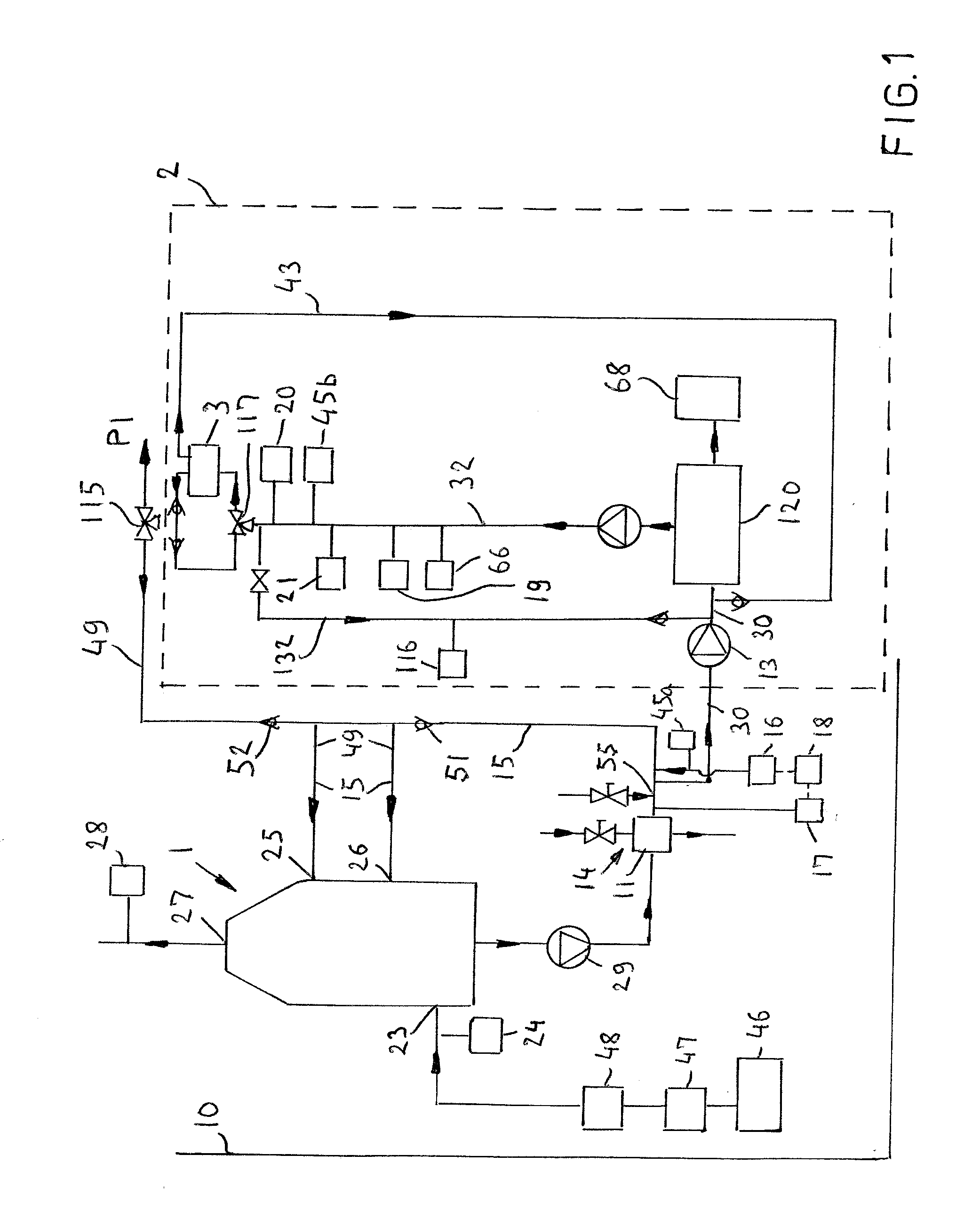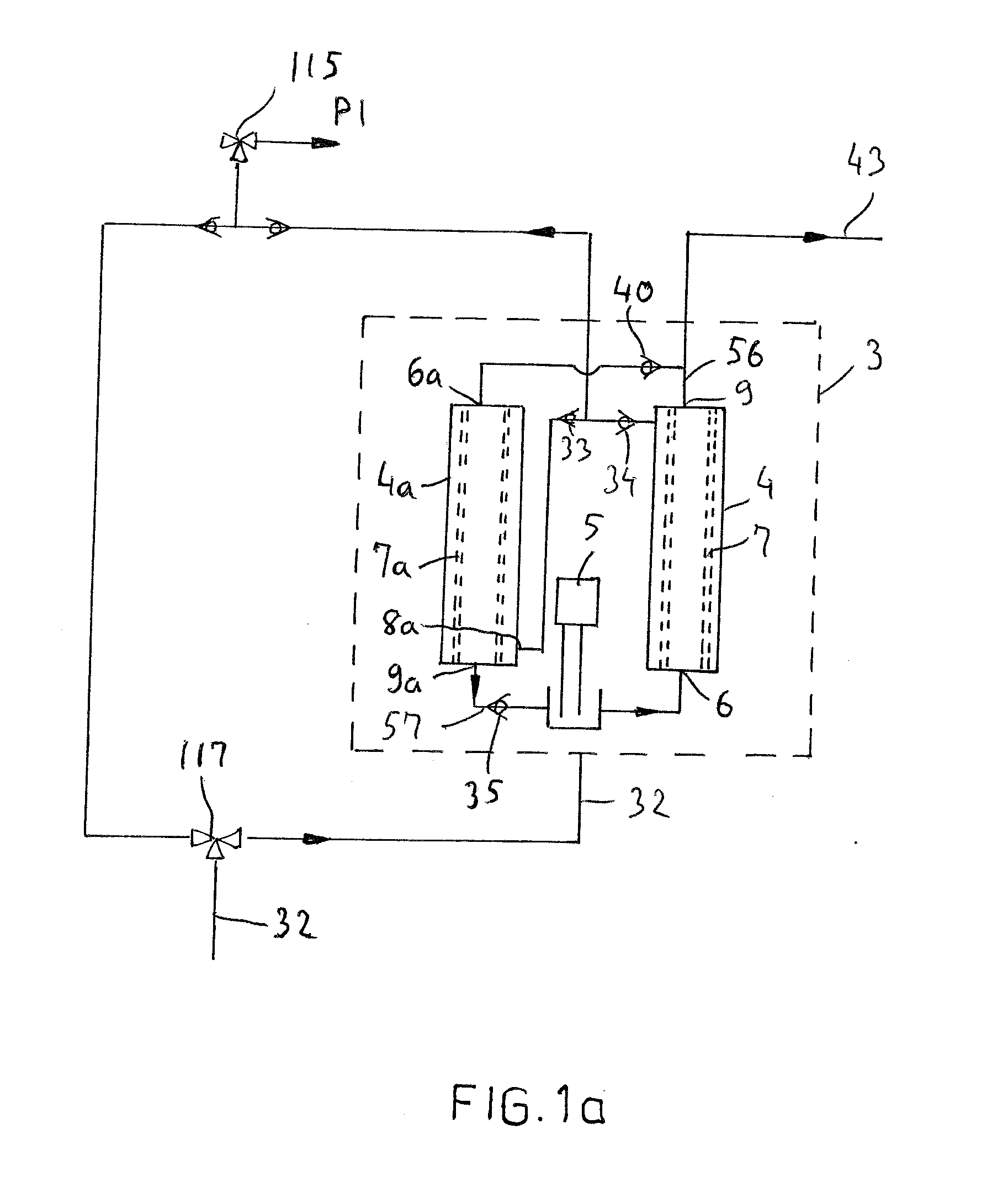Method for treating impurities contained in exhaust gases of ships, ship with a scrubber, and purification unit
a technology of scrubber and purification unit, which is applied in the direction of air quality improvement, water/sewage treatment by neutralisation, osmosis/dialysis, etc., can solve the problems of low sulphur fuel price, discharge into the sea, and too low ph value of wash water to be allowed to be discharged into the sea, etc., to achieve the effect of small volume and easy transfer
- Summary
- Abstract
- Description
- Claims
- Application Information
AI Technical Summary
Benefits of technology
Problems solved by technology
Method used
Image
Examples
example
[0106]The method and purification unit according to the invention were used for treating effluent from an exhaust gas scrubber of a heavy oil operated diesel engine of about 6000 kW power. The treatment took place by using the embodiment of the invention according to FIG. 4. The turbidity, pH and composition of the effluent prior to purification were: Turbidity 87 FNU, pH 12, nitrates (NO3−) 5.0 mg / L, nitrites (NO2−) 5.3 mg / L, sulphates (SO42−) 940 mg / L, sulphites (SO32−)3 / h through a coarse filter with a pore size of 35 μm. The effluent circulated in the effluent circuit provided with two series-connected membrane filters with a pore size of 50 nm. The flow rate in the effluent circuit was about 6 m / s and the pressure was 3 bar. The turbidity, pH and composition of purified effluent removed from the line 32′ was: Turbidity 1.6 FNU, pH 12, nitrates (NO3−) 4.8 mg / L, nitrites (NO2−) 5.1 mg / L, sulphates (SO42−) 380 mg / L, sulphites (SO32−)<10 mg / L, and PAH compounds 6.9 μg / L in total.
[0...
PUM
| Property | Measurement | Unit |
|---|---|---|
| temperature | aaaaa | aaaaa |
| temperature | aaaaa | aaaaa |
| pressure | aaaaa | aaaaa |
Abstract
Description
Claims
Application Information
 Login to View More
Login to View More - R&D
- Intellectual Property
- Life Sciences
- Materials
- Tech Scout
- Unparalleled Data Quality
- Higher Quality Content
- 60% Fewer Hallucinations
Browse by: Latest US Patents, China's latest patents, Technical Efficacy Thesaurus, Application Domain, Technology Topic, Popular Technical Reports.
© 2025 PatSnap. All rights reserved.Legal|Privacy policy|Modern Slavery Act Transparency Statement|Sitemap|About US| Contact US: help@patsnap.com



